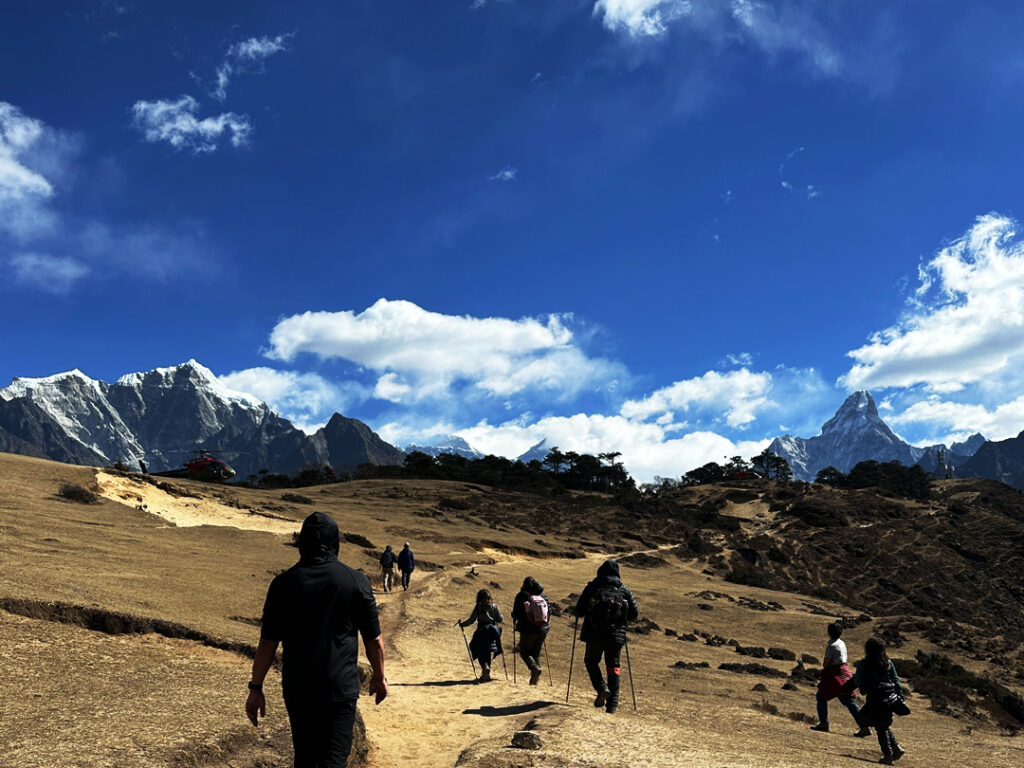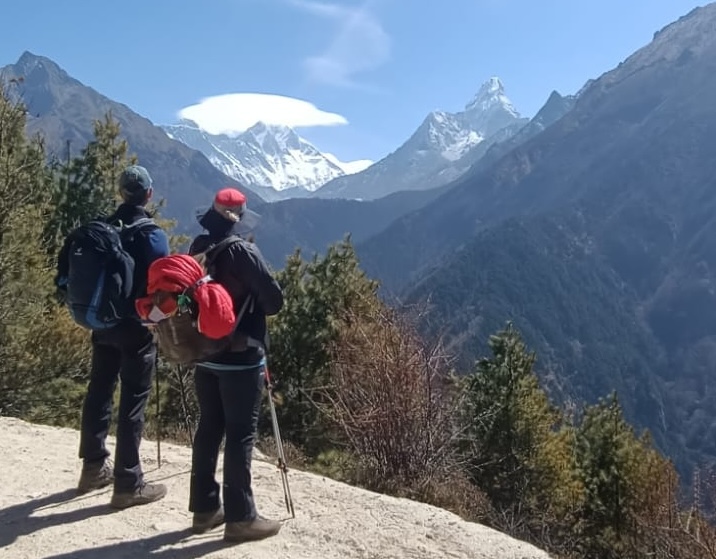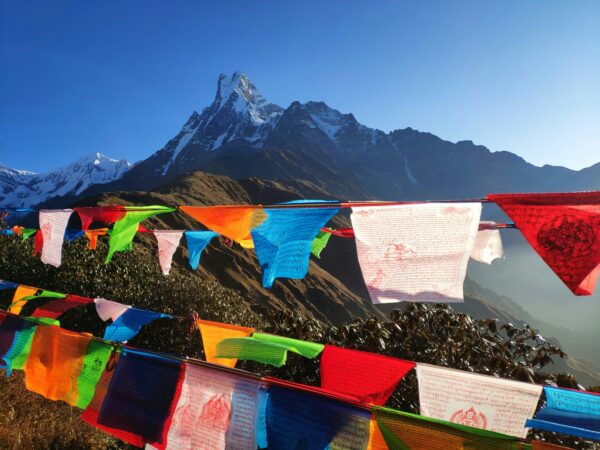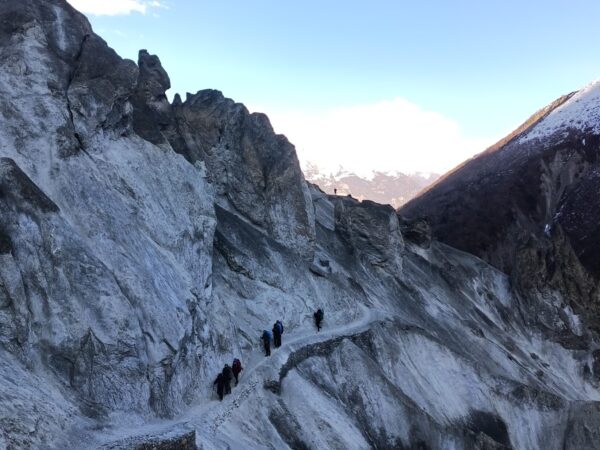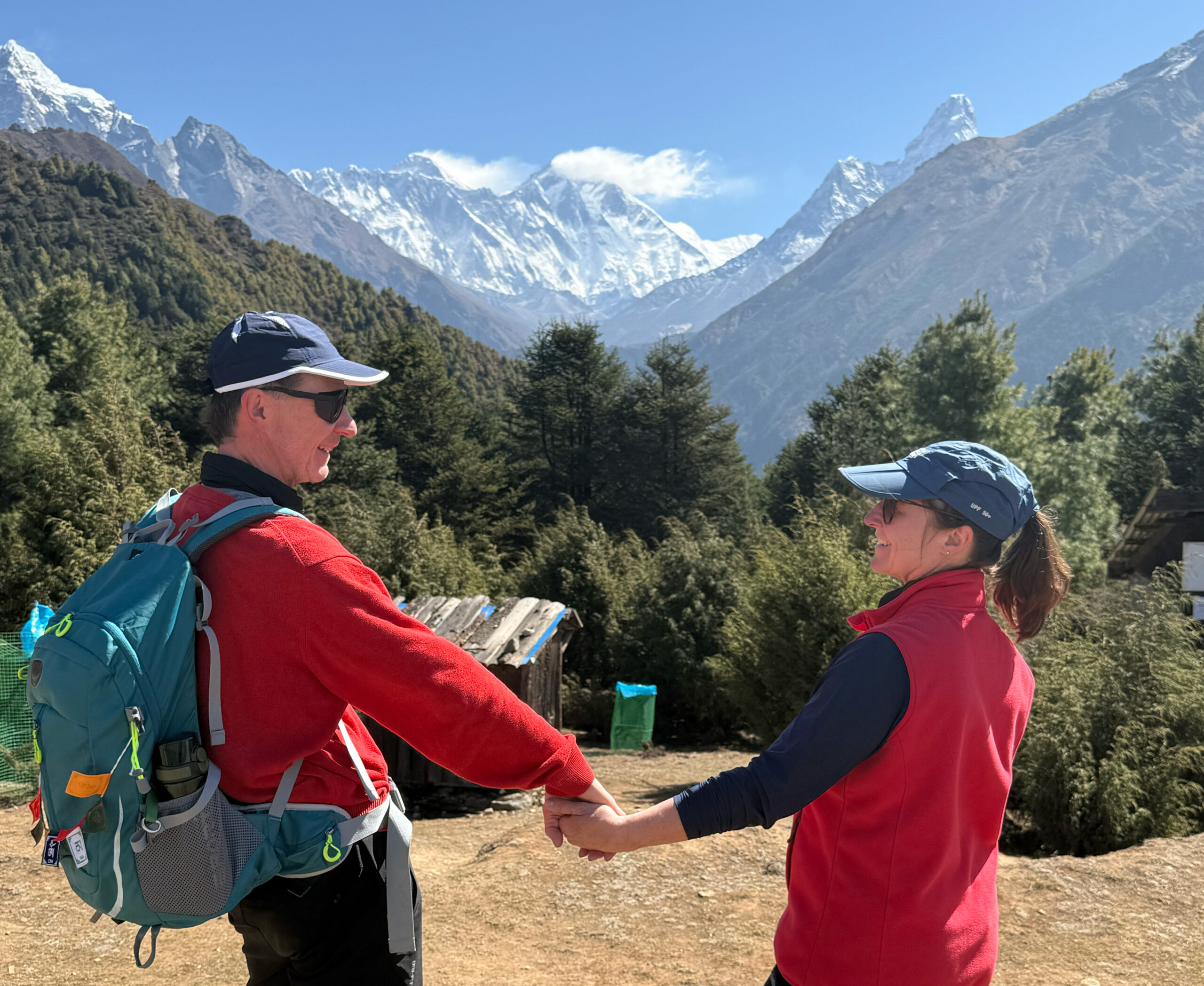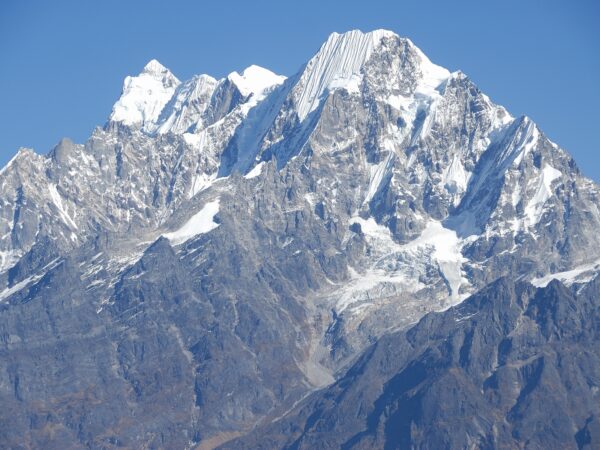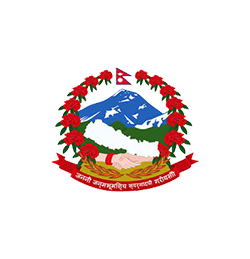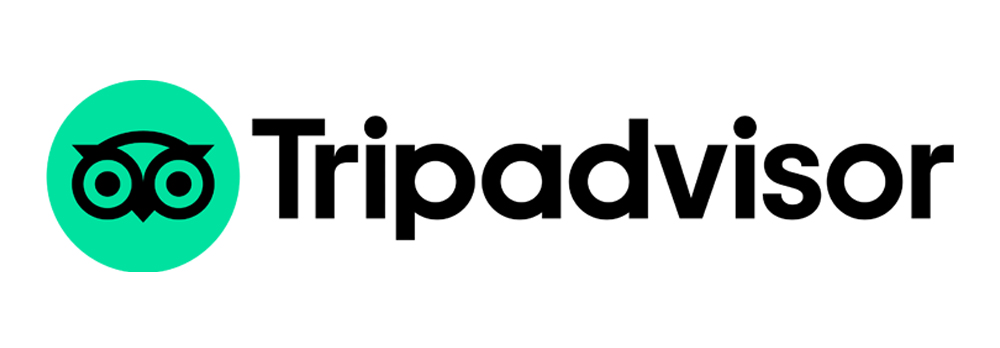Highlights
- Astonishing views of Mount Everest and surrounding peaks can be had
- Discover the verdant surroundings of Sagarmatha National Park, the world's highest national park
- A quick and easy trek in the Everest region, ideal for families or novice hikers
- Experience the rich culture of the Sherpa communities as you pass them
- Investigation of many Buddhist monasteries, including the ancient Tengboche Monastery
- A stunning vista of the Himalayan mountain ranges, encompassing numerous peaks such as Everest, Lhotse, Ama Dablam, Nuptse, and Thamserku
- Discover the fauna and flora of the Himalayas, especially the blooms of rhododendron
- Take in the breathtaking views of the mountains and lush surroundings
- In a short amount of time, get up near to the world's highest mountain
- An unforgettable voyage into the heart of the Everest region
Overview
The Everest Panorama Trek is an incredible adventure that captures the essence of the Khumbu region in Nepal. This relatively short trek, as its name suggests, offers breathtaking views of Mount Everest (8848m) and its surrounding peaks.
The trekking route traverses through the Himalayan villages of Khumbu, offering a unique opportunity to immerse yourself in the ethnic Sherpa culture. The journey begins with a sightseeing tour of Kathmandu city, followed by a short flight to Lukla. As trekkers walk under the lush canopy of rhododendron blooms, they are treated to stunning views of Everest adorning the skyline.
The trek seamlessly blends the rich Sherpa traditions of Khumbu, featuring mani walls carved with prayers and vibrant prayer flags that embellish the trans-Himalayan landscape. The trail passes through renowned mountain towns and villages, including Namche Bazaar, and culminates at Tengboche. Here, trekkers are rewarded with awe-inspiring vistas of peaks like Everest (8848m), Ama Dablam (6856m), Taboche (6367m), Lhotse (8414m), and Thamserku (6608m), all standing majestically behind the sacred Tengboche Monastery.
Offered by Himalayan Recreation, the Everest Panorama View Trek is one of the finest short treks in the Everest region. Our carefully designed itinerary aims to provide our clients with an unforgettable trekking experience, ensuring they get the most out of their journey.
Best Time to Everest Panorama Trek
The ideal times to undertake the Mount Everest Panorama trek are during the spring season from March to May and the autumn season from September to November. These months offer clear skies, stable weather conditions, and moderate temperatures, ensuring optimal visibility of the stunning mountain vistas.
Spring is particularly favorable, with moderate weather, clear skies, and long days creating an excellent environment for trekking. Additionally, the trail is adorned with blooming flowers, enhancing the experience.
Similarly, autumn is an excellent time for the trek, offering moderate weather and temperatures that make the journey pleasant.
In contrast, trekking during the monsoon and winter seasons is not recommended due to potential hassles such as heavy rainfall, trail blockages, landslides, and obstructed mountain views.
Food to Everest Panorama Trek
During the trek, you’ll be provided with three meals a day, featuring a blend of local and international cuisines. Enjoy traditional Nepali dishes like Dal Bhat, momo, and thukpa for lunch and dinner.
In addition, you can savor international flavors such as pasta and pancakes, which are readily available in the lower regions. Teahouses also offer beverages like tea, coffee, and soft drinks, along with snacks. We suggest bringing your own snacks to enjoy on the trail.
For drinking water, since tap water is not safe to drink, bottled water is available for purchase. To reduce plastic waste and ensure safe drinking water, it’s recommended to carry water purification methods or reusable water bottles with built-in filters.
Accommodation Facility on Everest Panorama Trek
The rooms will be available on a two-person sharing basis, with each hotel in Everest featuring two single beds. The beds will be comfortable, and the blankets will be cozy. For this Everest Panorama View Trek, a sleeping bag is not necessary as the guesthouse proprietors often provide an extra blanket. The main dining area will also be included in the Everest guest homes. Private restrooms are uncommon in such remote areas, so bathrooms are usually shared. However, hot showers and Wi-Fi are available at tea houses, though at an additional cost. Unlike other trekking routes, accommodations in Everest have power outlets, so charging is free. In Kathmandu, you’ll stay at a 3-star hotel with a private bathroom and bath, where Wi-Fi and all other fees are included.
Outline Itinerary
Day 1: Arrive in Kathmandu (1350 meters)
Day 2: Fly to Lukla and Trek to Phakding (2,610 meters)
Day 3: Trek to Namche Bazaar (3,440 meters)
Day 4: Trek to Khumjung
Day 5: Trek to Tengboche (3,860 meters)
Day 6: Trek back to Namche Bazaar (3,440 meters)
Day 7: Trek Back to Lukla (2840 meters)
Day 8: Morning Flight back to Kathmandu
Day 9: Departure Day
Everest Panorama Trek – 9 Days - Itinerary
Arrive in Kathmandu (1350 meters)
Upon arriving at Tribhuvan International Airport, our company representatives will warmly welcome you. They will assist you with your transfer to your hotel in Kathmandu. Once you check in, take some time to relax and recover from your journey. You'll spend the night at the hotel in Kathmandu.
Fly to Lukla and Trek to Phakding (2,610 meters)
It's the day to embark on your adventure with an exhilarating flight to Lukla, a small mountain town that acts as the gateway to the Everest region. The flight offers breathtaking aerial views of the Himalayas.
Upon landing at Tenzing-Hillary Airport in Lukla, you will meet your trekking crew and begin your journey to Phakding. The trail winds through picturesque landscapes, with the Dudh Koshi River accompanying you. Along the way, you'll catch glimpses of the majestic Mount Kusum Khangkaru (6,467m). You'll spend the night at a guesthouse in Phakding.
Trek to Namche Bazaar (3,440 meters)
Today, you will continue your trek to Namche Bazaar, a lively and bustling town often called the "Gateway to Everest." The trail follows the Dudh Koshi River, offering breathtaking views of Everest (8,848m) and Thamserku (6,608m).
As you make your way up to Namche Bazaar, you will have the chance to immerse yourself in Sherpa culture, experiencing a mix of traditional and modern amenities. You will spend the night at a guesthouse in Namche Bazaar.
Trek to Khumjung
After enjoying breakfast at your hotel, begin your hike towards Everest View Hotel, renowned for its panoramic vistas of Mount Everest (8848m) and surrounding peaks. En route, you'll visit the Syangboche Airstrip, offering breathtaking views of the Himalayas.
Today's trek continues with a scenic route leading to the picturesque village of Khumjung. Along the trail, pass by small stupas and Chortens, creating a tranquil ambiance throughout the journey.
Khumjung stands as one of the largest Sherpa villages in the area, celebrated for its rich cultural heritage. Upon reaching Khumjung, immerse yourself in the local way of life and admire views of Mount Everest (8848m) and the sacred Khumbila (5761m) peak. Spend the night at a cozy guesthouse in Khumjung, embracing the warmth of Sherpa hospitality.
Trek to Tengboche (3,860 meters)
Today's trek leads to Tengboche, a picturesque village celebrated for its iconic Tengboche Monastery. The journey starts amidst enchanting rhododendron forests, with Mount Khumbila (5761m) providing a majestic backdrop.
Upon reaching Tengboche, take the opportunity to discover the monastery, renowned for its exquisite architecture adorned with intricate murals and paintings. Enjoy breathtaking panoramic vistas of snow-capped peaks, including the towering Everest (8848m). Overnight, relax at a guesthouse in Tengboche, providing a peaceful sanctuary after a day filled with exploration.
Today's trek leads to Tengboche, a picturesque village celebrated for its iconic Tengboche Monastery. The journey starts amidst enchanting rhododendron forests, with Mount Khumbila (5761m) providing a majestic backdrop.
Upon reaching Tengboche, take the opportunity to discover the monastery, renowned for its exquisite architecture adorned with intricate murals and paintings. Enjoy breathtaking panoramic vistas of snow-capped peaks, including the towering Everest (8848m). Overnight, relax at a guesthouse in Tengboche, providing a peaceful sanctuary after a day filled with exploration.
Trek back to Namche Bazaar (3,440 meters)
Today marks the descent back to Namche Bazaar, enveloped by vibrant rhododendron and oak forests. Take in the serene atmosphere and breathtaking vistas of peaks such as Thamserku (6608m) and Kangtega (6685m) as you trace your path back to Namche Bazaar.
Upon arriving in Namche, immerse yourself in exploring the town, engaging with locals, and indulging in local delicacies. Enjoy an overnight stay at a cozy guesthouse, reflecting on the day's adventures.
Trek Back to Lukla (2840 meters)
Return along the trail towards Lukla, traversing picturesque villages and vibrant landscapes of the region. Take in the lush forests and snow-capped peaks one last time as you descend. Spend the night at a guesthouse in Lukla.
Morning Flight back to Kathmandu
Today marks the end of your mountain adventure as you board an early morning flight back to Kathmandu. Take in the final breathtaking views of the Himalayan panorama from above.
Upon arrival in Kathmandu, immerse yourself in exploring the bustling streets, indulging in souvenir shopping, or unwinding at a charming local cafe. Later in the evening, enjoy a memorable farewell dinner arranged by the company. Retire for the night at your hotel for a well-deserved rest.
Departure Day
One of our representatives will accompany you to the airport at your scheduled departure time.
Inclusions
What's included
- International & Domestics Airport pick up and drop
- 2 Nights Standard Hotel accommodation in Kathmandu (with breakfast included)
- An Experience English speaking guide and porter (1 porter for every 2 trekkers)
- All Meals and Teahouse accommodation during the trek
- Kathmandu to Lukla Flight Ticket (Round Trip)
- All required trekking permits (National Park Entry Fee and Pasang Lhamu Rural Municipality Entry Fee)
- Guide insurance with food and accommodation
- Basic Medical kits
- Sleeping and duffel bag, down jacket, trekking poles (should be returned after the trek)
- Emergency Helicopter Evacuation Service Arrangement Only (should cover by your travel insurance)
- All required paper works and government taxes
- Farewell dinner
What's not included
- International Flight
- Nepal Travel Visa Fee
- Personal Medical and Travel insurance (Should cover helicopter evacuation)
- Porter
- Guide, Porter and Driver tips
- Personal Gears (equipment)
- Personal bill
- Lunch and Dinner in Kathmandu
- All other personal expense of beverages (hard and soft drinks)
- All other things not mentioned in the inclusion.
Equipment
Recommended Trekking Gears
Clothing
- Base Layers (Moisture-Wicking)
- Thermal tops and bottoms (polyester or merino wool)
- Lightweight long-sleeve shirts
- Insulating Layers
- Fleece jacket or pullover
- Down jacket (for high-altitude treks)
- Warm sweaters
- Outer Layers (Shells)
- Waterproof and windproof jacket (Gore-Tex or similar)
- Waterproof pants
- Trekking Pants
- Quick-dry pants
- Convertible hiking pants (zip-off into shorts)
- Trekking Shirts
- Lightweight and breathable T-shirts
- Long-sleeve shirts with UV protection
- Headwear
- Wide-brim hat or cap for sun protection
- Warm beanie for cold temperatures
- Buff or scarf for dust and wind
- Gloves
- Lightweight trekking gloves
- Insulated gloves for higher altitudes
- Socks
- Moisture-wicking trekking socks
- Thermal socks for colder regions
- Footwear
- Sturdy and waterproof trekking boots (well broken-in)
- Comfortable sandals or camp shoes (for evenings/rest days)
- Gaiters (optional, for snow or muddy trails)
Backpacks & Bags
- Backpack
- 40-50L capacity for multi-day treks
- Comfortable straps and rain cover
- Daypack
- 20-30L for short treks or carrying essentials during the day
- Duffel Bag
- Used if porters are carrying your gear (for organized treks)
- Dry Bags
- To keep electronics and clothes dry in wet conditions
Sleeping Gear
- Sleeping Bag
- 4-season sleeping bag (rated for -10°C to -20°C for high-altitude treks)
- Sleeping bag liner (optional, for extra warmth and hygiene)
- Sleeping Pad (if camping)
- Lightweight and inflatable or foam pads for comfort
Trekking Accessories
- Trekking Poles
- Adjustable and lightweight poles (essential for steep ascents/descents)
- Water Bottle/Hydration System
- Insulated bottle (to prevent freezing at high altitudes)
- CamelBak or similar hydration reservoir
- Water Purification
- Water filters, purification tablets, or UV sterilizers
- Sunglasses
- UV protection (Category 3 or 4 for snowy conditions)
- Headlamp
- With spare batteries (essential for early morning or late-night treks)
- Multi-tool or Knife
- For various small tasks
- First Aid Kit
- Bandages, blister patches, antiseptic wipes, painkillers, Diamox (for altitude sickness), etc.
- Lip Balm
- SPF-protected to prevent chapping
- Sunscreen
- High SPF for UV protection at higher altitudes
- Personal Toiletries
- Biodegradable soap, toothpaste, toothbrush, quick-dry towel, wet wipes, and toilet paper
Optional but Useful Items
- Camera
- To capture the stunning scenery (extra batteries and memory cards are a must)
- Snacks
- Energy bars, trail mix, or chocolate for quick energy boosts
- Power Bank/Solar Charger
- For charging devices in remote areas
- Books or E-Readers
- For downtime during rest days
- Earplugs
- To block out noise in lodges or camps
- Notebook/Journal
- To record your trek experience
Clothing Packing Tips
- Layering is key: It helps regulate your body temperature and adapt to changing weather.
- Avoid cotton: It retains moisture and dries slowly, which can lead to discomfort or hypothermia.
- Pack light: Only carry what is absolutely necessary to avoid unnecessary weight.
Gear Rentals in Nepal
If you're worried about carrying too much gear, trekking hubs like Kathmandu and Pokhara offer trekking equipment rentals and sales. You can find items like sleeping bags, down jackets, and trekking poles at reasonable prices. However, ensure you check the quality before renting.

